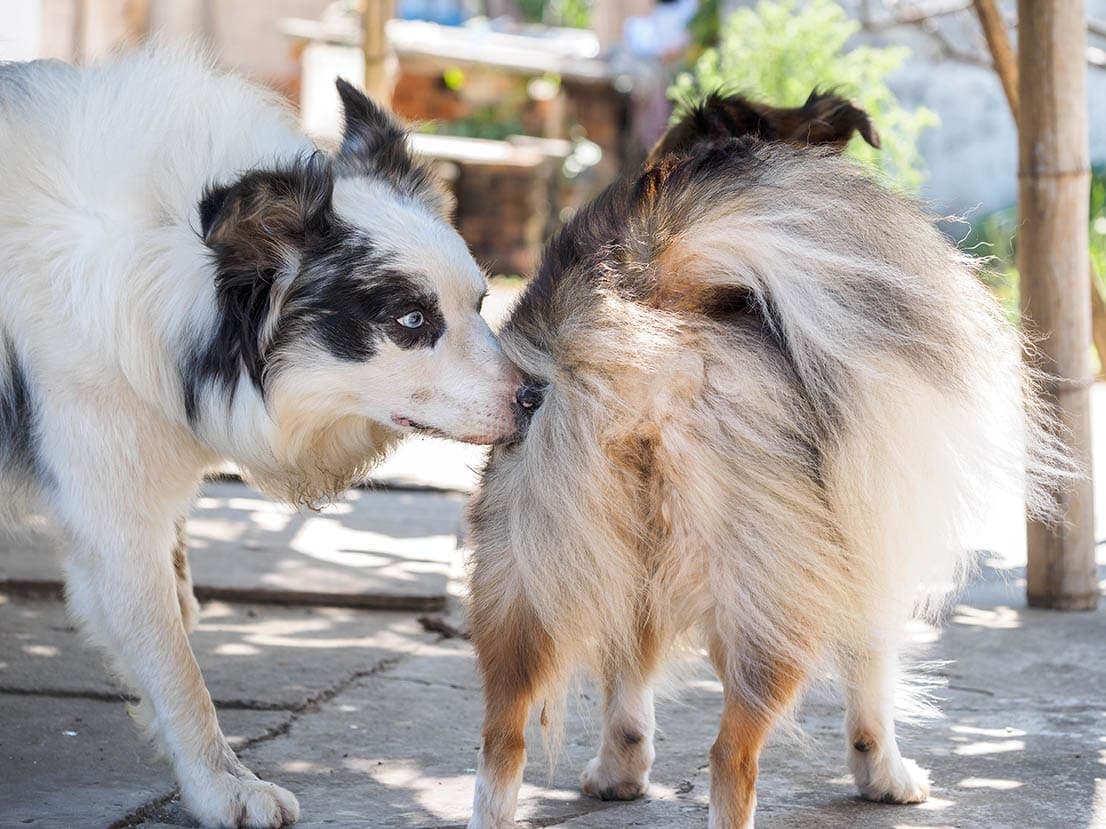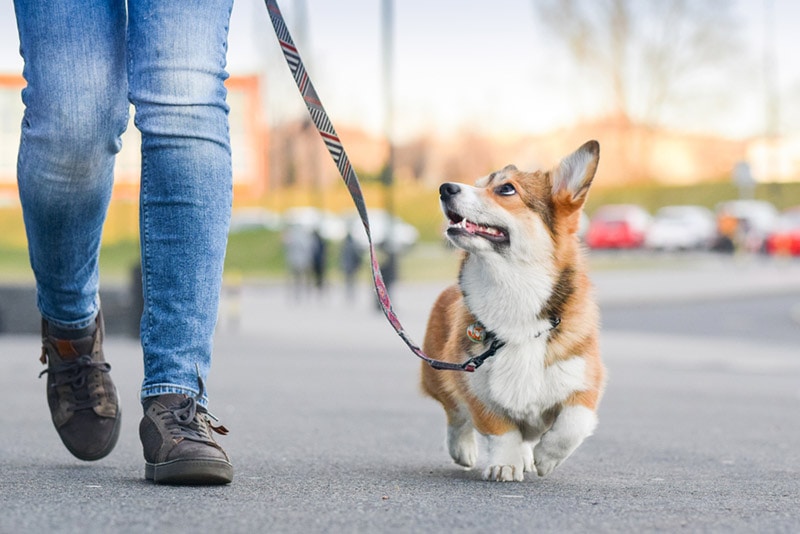Do Dogs Feel Pain When in Heat? Facts & FAQ
Updated on

Click to Skip Ahead
Watching a dog in heat can be unsettling—there might be changes in her behavior, humping, pacing, and sometimes crying. The last thing that you want is to watch your dog in obvious discomfort. This may make you wonder if your dog is actually experiencing pain.
Being in heat is not considered a painful process for dogs. Some dogs may experience mild discomfort at this time, but if you think that your dog is in pain, this is not normal and they should see a vet. It is important that you have a solid understanding of how your dog’s heat cycle works to have a better idea of what to expect and how to best support her during this time.
What Is Being in Heat?
When a female dog is intact (hasn’t been spayed yet), being in heat signals that she is ready to breed. Being in heat is also called estrus, and how often dogs go into heat, how long it lasts, and how severe the signs are all depend on the dog’s individual characteristics, breed, and age.
When Does the Estrus Cycle Start?
When estrus starts depends on the breed of the dog. Small female dogs can go into heat starting at about 4 months of age, whereas large breeds might go into heat later, by 18 months. The average age is around 6 months old.
However, even if the dog is old enough to breed, she should only have a planned pregnancy after her second year of life.

How Does the Estrus Cycle Work?
There are four stages in the estrus cycle:
- Proestrus: It’s called proestrus because it’s the first stage of the heat cycle. The dog’s body begins to get ready for mating. The physical signs are bloody discharge and behavioral changes. She’ll attract males but isn’t ready to mate. It generally lasts between 7 and 10 days.
- Estrus: This is when the dog is in full-on heat and is fertile and ready to mate. The bloody discharge will gradually reduce or stop, and she’ll start to show more aggression toward other female dogs and hold her tail to the side for male dogs. It lasts around 5 to 10 days.
- Diestrus: At this stage, the dog is either pregnant or her body slowly returns to normal. It usually lasts around 60 days.
- Anestrus: This is when the dog’s cycles are inactive, and there are no physical or hormonal changes. It can last between 2 and 5 months but typically lasts around 3 months.
How Often Do Dogs Experience Estrus?
Like when they first experience estrus, it depends on the dog’s breed and age. Intact females will usually go into heat twice a year, which works out to every 6 months.
The average heat cycle lasts about 18 days, or 2 to 3 weeks. This depends on your dog, but the cycles should be fairly regular and consistent. Take your dog to the vet if this regularity changes.
As your dog ages, her heat cycles will likely slow down, but she will enter estrus for the rest of her life, which also means she can still get pregnant.
What Are the Signs of Estrus?
- Frequent urination
- Red and swollen vulva
- Bloody discharge
- Excessive licking of the genitals
- Loss of appetite
- Seeking male dogs
- Overly friendly with other dogs (or aggressive behavior with female dogs)
- Holding her tail to the side
- Pacing and nervous behavior
- Humping and mounting behavior
- Panting and vocalizations such as whining
Some dogs will experience many of these signs, while others might not exhibit any.

Do Dogs Experience Pain While in Heat?
With all the hormonal and behavioral changes going on, female dogs can experience a certain level of discomfort, which can make them irritable and potentially even cause mood swings.
If you believe that your dog is in any pain, speak to your vet, who can investigate the source of pain, prescribe medication if necessary, or give you advice on how to help your dog at this time.
How Do You Help Your Dog While She’s in Heat?
There are a few steps that you can take to help your dog while she’s in estrus.
- Provide outdoor supervision: When you let your dog outside, she needs to be supervised at all times and on a leash. You could consider keeping her in a fenced yard and with someone also outside to keep an eye on her. Male dogs will smell her pheromones and will do whatever it takes to reach her. She’ll want out of the yard for the same reason.
- Keep her on a leash: When you take her out for a walk, always ensure that she’s on a leash. Regardless of how well-trained she is, all that training will go out the window when her instincts kick in. She’ll need more frequent walks because she will probably be urinating more frequently.
- Give her time to rest: Going through estrus can be quite exhausting on your dog, so ensure that she has plenty of time, peace, and quiet to rest.
- Try to reduce her scent: You can try out dog diapers (these are washable), which can help mask the smell somewhat and contain any mess. You could also keep the house clean and use sprays that can eliminate pet odors. This way, you’re doing your best at containing your dog’s pheromone scent to just your dog.
- Let your dog rest in an easy-to-clean area: If you don’t want to use a diaper, you can try to remove or avoid any carpets any fabric-covered furniture for her to accidentally make a mess on. Try covering her bed in towels, which will help with easy cleanup. Ensure that she has plenty of chew toys to help keep her entertained.
- Have her spayed: This is the ultimate solution. Try to have her spayed before she enters her next estrous cycle. However, it needs to be timed for about 6 to 8 weeks after her heat cycle has finished.

Conclusion
Different dogs will display signs of heat in different ways. They will experience behavioral and physical changes, and they might also display agitated or even lethargic behavior. You’ll need to adjust your dog’s usual routine to help support her needs at this time, possibly with more frequent walks and naps.
If she wants to sleep most of the time, let her, but if she’s agitated, try playing with her, grooming her, or giving her gentle pets. She just might need a bit of reassurance.
Also, consider getting her spayed. If you don’t plan on breeding from her, there’s no reason to keep her intact.
In the meantime, give her plenty of love and affection. With your attention and care, she’s bound to feel calmer throughout this sometimes difficult but natural process.
Featured Image Credit: atiger, Shutterstock














